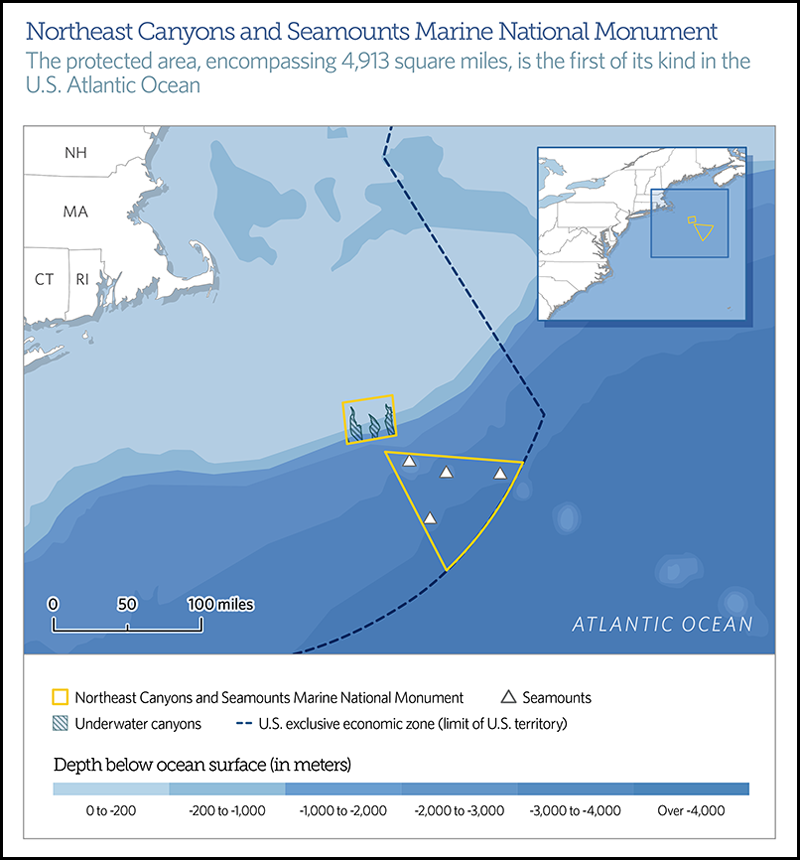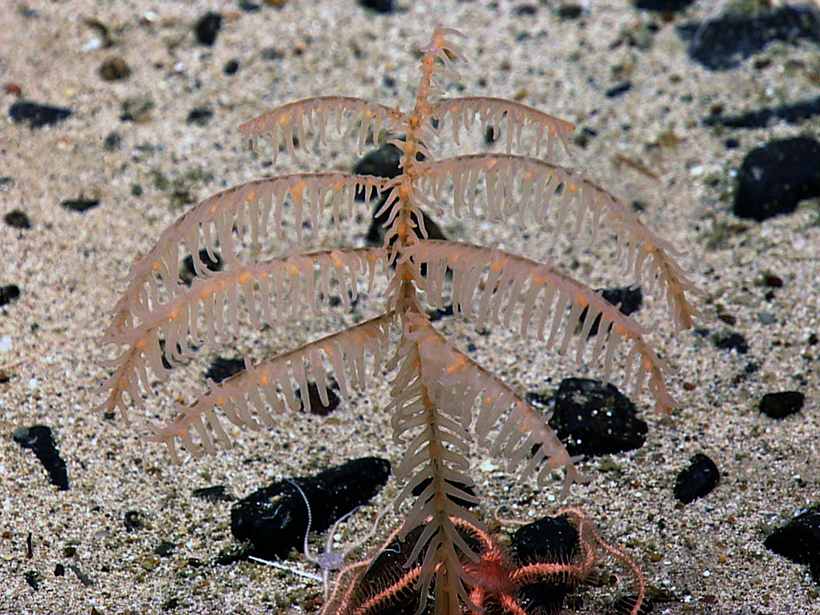At an international conference on oceans last week, U.S. president Barack Obama announced the establishment of a unique Atlantic Ocean sanctuary off the coast of New England that provides habitat for a wide variety of fish and other maritime creatures, including rare and endangered species.
The creation of the first U.S. marine national monument in the Atlantic protects two areas about 200 kilometers from the New England coast that total 12,696 square kilometers (4913 square miles). One of the areas contains four underwater seamounts that the administration says are biological hot spots. The other includes three underwater canyons.
At the Our Ocean Conference 2016 in Washington, D. C., on 15 September, dozens of other countries also announced new protected marine areas and other ocean conservation commitments.
Climate Change Resilience
The new U.S. monument will protect fragile ecosystems and also help to make the oceans more resilient to climate change.
Obama said that the new Atlantic Northeast Canyons and Seamounts Marine National Monument will protect fragile ecosystems and also help to make the oceans more resilient to climate change. “This will help fishermen better understand the changes that are taking place that will affect their livelihood, and we’re doing it in a way that respects the fishing industry’s unique role in New England’s economy and history,” he said.
The president noted that conservation efforts and “our obligations” to combat climate change “go hand in hand.” He added that the more that threats such as overfishing and pollution can be eliminated through conservation, “the more resilient those ecosystems will be to the consequences of climate change.”
In 2004, the National Oceanic and Atmospheric Administration’s (NOAA) research vessel Okeanos Explorer investigated the region, which NOAA and the Department of the Interior will jointly manage as a national monument.

Environmental groups, including the Pew Charitable Trusts, applauded the measure to protect “biologically important areas.” However, some fishing groups oppose the plan, with the Atlantic Offshore Lobstermen’s Association calling it “deplorable.”
Additional Commitments to Marine Protection
The administration’s designation of the Atlantic preserve follows its expansion in August of the Papahānaumokuākea Marine National Monument, off Hawaii, which made that Pacific sanctuary the world’s largest marine protected area.
Other commitments unveiled at or just prior to the conference include the United Kingdom’s designation of an approximately 830,000 square kilometer marine reserve around the Pitcairn Islands in the South Pacific Ocean, Malaysia’s establishment of the 10,000 square kilometer Tun Mustapha Park marine protected area, a plan by the Seychelles to establish a protected area of up to 400,000 square kilometers by 2020, and Cambodia’s establishment of its first marine protected area covering 405 square kilometers.
Industry Presence “Minimal”
The conference, held at the U.S. State Department, brought together governments, scientists, the environmental community, and foundations. However, industry presence at the conference was “minimal,” according to Paul Holthus, president and CEO of the World Ocean Council.
Governments need “to think about the role of industry and how [to] develop partnerships.”
“A key component to the future of the oceans is ensuring that we’ve got the private sector involved as a leader” addressing sustainable development and environmental challenges in the oceans, Holthus told Eos.
He urged the governments of the United States and other countries “to think about the role of industry and how [to] develop partnerships” with shipping, fishing, oil and gas, and other maritime industries. Such partnerships could work on solutions based on science and risk assessments “that need to be developed and implemented as a way to do business in the ocean,” he said.
—Randy Showstack, Staff Writer
Citation:
Showstack, R. (2016), Obama unveils first marine national monument in the Atlantic, Eos, 97, https://doi.org/10.1029/2016EO059601. Published on 19 September 2016.
Text © 2016. The authors. CC BY-NC-ND 3.0
Except where otherwise noted, images are subject to copyright. Any reuse without express permission from the copyright owner is prohibited.

